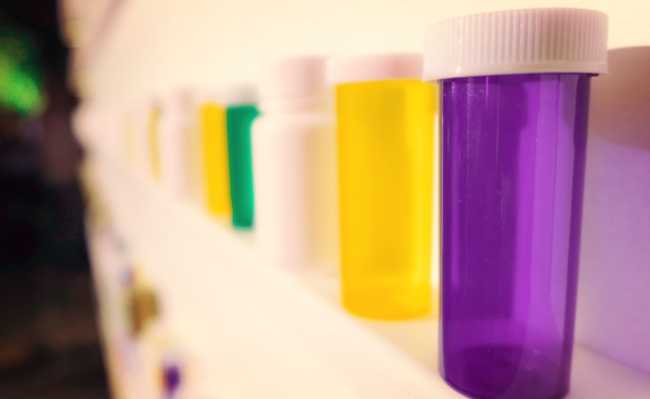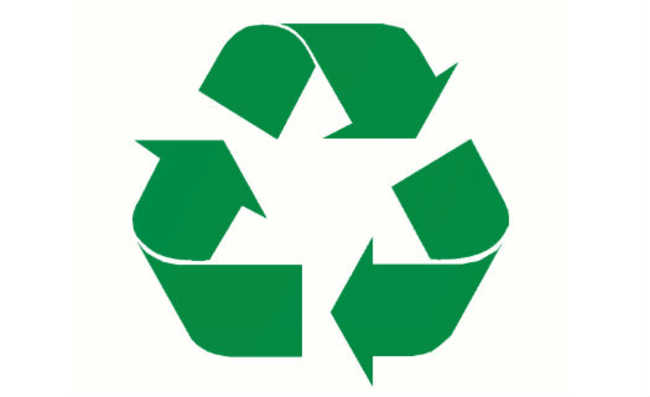What is the ozone layer?
Know what it is, what gases impact and when the ozone layer must regenerate

What is the ozone layer? This is a very important question for anyone concerned about the health of planet Earth and, consequently, ours. But to answer it, you first need to understand how some basic processes in the atmosphere work.
One of the main environmental problems associated with chemistry and air pollution is the depletion (or degradation) of the ozone layer. Surely you have already heard of this subject. The ozone layer, as its name implies, is a layer of the Earth's atmosphere that has high concentrations of ozone (O3) . The greatest concentration is located in the stratosphere, around 20 km to 25 km away from the Earth's surface. These concentrations peak at high latitudes (poles) and the lowest occur in tropical regions (although the rate of O3 production is higher in the tropics).
As already stated in our article "Ozone: bad guy or good guy?", this gas can be both extremely important and essential for life on Earth, as a highly toxic pollutant. It all depends on the atmospheric layer it's in. In the troposphere, he's a villain. In the stratosphere, a good guy. In this article, we are going to talk about stratospheric ozone, pointing out its functions, its importance, how it has been degraded and how to prevent this from continuing to happen.
Roles
Stratospheric ozone (the good guy) is responsible for filtering solar radiation at some wavelengths (absorbs all ultraviolet B radiation, called UV-B and a part of other types of radiation) capable of causing certain types of cancer, being a of the worst is melanoma. It also has the function of keeping the Earth warm, preventing all the heat emitted on the planet's surface from dissipating.
What is the ozone layer?
The ozone layer, as mentioned earlier, is a layer that concentrates about 90% of O3 molecules. This layer is essential for life on earth as it protects all living things by filtering out type B ultraviolet solar radiation. Ozone behaves differently depending on its altitude. In 1930, an English physicist named Sydnei Chapman described the processes of production and degradation of stratospheric ozone based on four steps: photolysis of oxygen; ozone production; ozone consumption I; ozone consumption II .
1. Oxygen photolysis
Solar radiation hits an O2 molecule, separating its two atoms. In other words, this first step obtains two free oxygen atoms (O) as a product.
2. Ozone production
In this step, each of the free oxygens (O) produced in photolysis reacts with an O2 molecule, obtaining ozone molecules (O3) as a product. This reaction takes place with the help of a catalyst atom or molecule, a substance that allows the reaction to occur more quickly, but without actively acting and without binding to the reactants (O and O2) or to the product (O3).
Steps 3 and 4 demonstrate how ozone can be degraded in different ways:
3. Ozone consumption I
The ozone formed in the production step is then degraded again into an O and an O2 molecule by the action of solar radiation (when in the presence of wavelengths ranging from 400 nanometers to 600 nanometers).
4. Ozone consumption II
Another way that ozone (O3) is degraded is by reaction with free oxygen atoms (O). In this way, all these oxygen atoms will recombine, generating two oxygen molecules (O2) as a product.
But then, if ozone is produced and degraded, what maintains the ozone layer? To answer this question, we must consider two important factors: the rate of production/destruction of molecules (speed at which they are produced and destroyed), and their average lifetime (time required to reduce the concentration of some compound to half of your initial concentration).
Regarding the rate of production/destruction of molecules, it was found that steps 1 and 4 are slower than steps 2 and 3 of the process. However, as everything starts in the oxygen photolysis step (step 1), we can say that the ozone concentration to be generated depends on it. This then explains why the concentration of O3 decays at altitudes above 25 km and at lower altitudes; at altitudes above 25 km, the concentration of O2 decreases. In lower atmospheric layers, longer wavelengths predominate, which have less energy to break down oxygen molecules, reducing their photolysis rate.
Despite the great discovery of these steps, if we were to consider only these destruction processes, we would obtain O3 concentration values twice as high as those observed in reality. This does not happen because, in addition to the steps shown, there are also unnatural cycles of ozone depletion, caused by Ozone Depleting Substances (ODS): products such as halon, carbon tetrachloride (CTC), hydrochlorofluorocarbon (HCFC), chlorofluorocarbon (CFC) and methyl bromide (CH3Br). When they are released into the atmosphere, they move to the stratosphere, where they are decomposed by UV radiation, releasing free chlorine atoms, which in turn break the ozone bond, forming chlorine monoxide and oxygen gas. The chlorine monoxide formed will react again with the free oxygen atoms, forming more chlorine atoms, which will react with the oxygen, and so on. It is estimated that each chlorine atom can decompose about 100,000 ozone molecules in the stratosphere and has a shelf life of 75 years, but there has already been enough discharge to react with ozone for almost 100 years. In addition to reactions with hydrogen oxides (HOx) and nitrogen oxides (NOx), which also react with stratospheric O3, destroying it, contributing to the degradation of the ozone layer.
The chart below shows the history of consumption of ODSs in Brazil:

Where are the Ozone Depleting Substances and how to avoid them?
CFCs
Chlorofluorocarbons are synthesized compounds formed by chlorine, fluorine and carbon, which have been widely applied in several processes - the main ones are listed below:
- CFC-11: used in the manufacture of polyurethane foams as an expanding agent, in aerosols and medicines as a propellant, in domestic, commercial and industrial refrigeration as a fluid;
- CFC-12: applied in all processes in which CFC-11 was used and also mixed with ethylene oxide as a sterilant;
- CFC-113: used in precision electronics elements, such as cleaning solvents;
- CFC-114: used in aerosols and medicines as a propellant;
- CFC-115: used as a fluid in commercial refrigeration.
It is estimated that these compounds are about 15 thousand times more harmful to the ozone layer than CO2 (carbon dioxide).
In 1985, the Vienna Convention for the protection of the ozone layer was ratified in 28 countries. With promises of cooperation in research, monitoring and production of CFCs, the convention presented the idea of facing an environmental problem at a global level before its effects were felt or scientifically evidenced. For this reason, the Vienna Convention is considered one of the greatest examples of the application of the precautionary principle in major international negotiations.
In 1987, a group of 150 scientists from four countries went to Antarctica and confirmed that the concentration of chlorine monoxide was about a hundred times higher in that region than anywhere else on the planet. Then, on September 16 of the same year, the Montreal Protocol established the need for the gradual banning of CFCs and their replacement by gases that were not harmful to the ozone layer. Thanks to this protocol, September 16th is considered the World Day for the Protection of the Ozone Layer.
The Vienna Convention for the Protection of the Ozone Layer and the Montreal Protocol were ratified in Brazil on March 19, 1990, being promulgated in the country on June 6 of the same year, by Decree No. 99.280.
In Brazil, the use of CFCs was completely discontinued in 2010, as shown in the chart below:

HCFCs
Hydrochlorofluorocarbons are artificial substances imported by Brazil, initially, in small quantities. However, due to the ban on CFCs, use is on the rise. The main applications are:
manufacturing sector
- HCFC-22: air conditioning and foam refrigeration;
- HCFC-123: fire extinguishers;
- HCFC-141b: foams, solvents and aerosols;
- HCFC-142b: foams.
Service sector
- HCFC-22: air conditioning refrigeration;
- HCFC-123: refrigeration machines (chillers);
- HCFC-141b: cleaning of electrical circuits;
- HCFC mixtures: air conditioning coolers.
According to the Ministry of the Environment (MMA), it is estimated that, by 2040, the consumption of HCFCs will be eliminated in Brazil. The chart below shows the evolution in the use of HCFCs:

methyl bromide
It is a halogenated organic compound which, under pressure, is a liquefied gas, which may have natural or synthetic origin. Methyl bromide is immensely toxic and lethal to living things. It was widely used in agriculture and in the protection of stored goods and for the disinfection of warehouses and mills.
Brazil already had its import quantities of methyl bromide frozen since the mid-1990s. In 2005, the country reduced 30% of imports.
The table below shows the schedule stipulated by Brazil for the elimination of the use of methyl bromide:
Schedule stipulated by Brazil to eliminate the use of methyl bromide | |
|---|---|
| Deadline | Cultures/Uses |
| 11/09/02 | Purges in stored cereals and grains and in the post-harvest treatment of crops of:
|
| 31/12/04 | Smoke |
| 31/12/06 | Vegetable, flower and anticide seeding |
| 31/12/15 | Quarantine and phytosanitary treatment for import and export purposes:
|
| Source: MAPA/ANVISA/IBAMA Joint Normative Instruction nº. 01/2002. | |
According to the MMA, the use of methyl bromide is only authorized for quarantine and pre-shipment treatments reserved for imports and exports.
Below, the graph shows the history of methyl bromide consumption in Brazil:

Halons
The substance halon is produced artificially and imported by Brazil. It is made up of bromine, chlorine or fluorine and carbon. This substance was widely used in fire extinguishers for all types of fire. According to the Montreal Protocol, in 2002, the importation of halon referring to the average Brazilian importation between 1995 and 1997 would be allowed, reducing 50% in 2005 and, in 2010, the importation would be totally prohibited. However, Conama Resolution No. 267 of December 14, 2000 went further, prohibiting the importation of new halons from 2001, allowing the importation only of regenerated halons, as they are not part of the protocol's elimination schedule.
Halon-1211 and halon-1301 are mainly used in the elimination of marine fires, in air navigation, on oil tankers and oil extraction platforms, in cultural and artistic collections and in electric and nuclear power generation plants, in addition to their use. military. In these cases, the use is allowed due to its efficiency in extinguishing fire spots without leaving residues and without damaging systems.
According to the chart below, Brazil has already eliminated the consumption of halons.

chlorine
Chlorine is emitted into the atmosphere in an anthropic way (via human activity), mainly through the use of CFCs (chlorofluorocarbons), which we have already seen above. They are gaseous synthetic compounds, widely used in the manufacture of sprays and in older refrigerators and freezers.
Nitrogen oxides
Some natural emitting sources are microbial transformations and electrical discharges in the atmosphere (lightning). They are also generated by anthropogenic sources. The main one is the burning of fossil fuels at high temperatures. For this reason, the emission of these gases occurs in the troposphere, which is the layer of the atmosphere where we live, but they are easily carried to the stratosphere through the convection mechanism, and can then reach the ozone layer, degrading it.
One of the methods to avoid NO and NO2 emissions is the use of catalysts. Catalysts in industries and in automobiles have the function of accelerating the chemical reactions that transform pollutants into products that are less harmful to human health and the environment, before they are released into the atmosphere.
hydrogen oxides
The main source of HOx in the stratosphere is the formation of OH from the photolysis of ozone, which produces excited oxygen atoms, which react with water vapors.
Ozone hole

Image: NASA
In 1985, it was discovered that there was a significant reduction of approximately 50% of stratospheric ozone between September and November, which corresponds to the spring period in the southern hemisphere. The responsibility was attributed to the action of chlorine from CFCs. Several studies indicated that the process had been going on since 1979.
The only hole in the ozone layer is located over Antarctica - elsewhere, what happened was the slow and gradual depletion of the ozone layer.
However, there is a great current trend of reversing damage to the ozone layer, due to the measures adopted in the Montreal Protocol, as reported by the United Nations Development Program (UNDP). The expectation is that, around 2050, the layer will be restored to pre-1980 levels.
Curiosity: why only at the South Pole?
The explanation for the hole only occurring over Antarctica can be given by the special conditions of the South Pole, such as low temperatures and isolated atmospheric circulation systems.
Due to convection currents, air masses circulate uninterruptedly, but in Antarctica, due to its extremely severe winter, air circulation does not occur, producing convection circles restricted to the area, which are called polar vortex or vortex.
See also this brief video produced by the National Institute for Space Research (Inpe) on the degradation of the ozone layer by CFCs:










